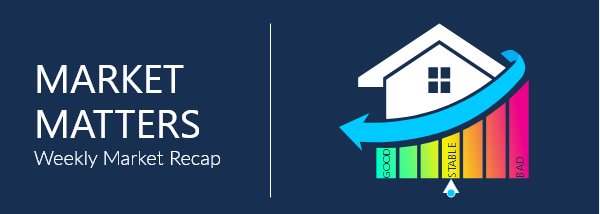Market Matters

Manufacturing data, trade deficits, and the August jobs report were the center of news this past week. We also received a bit more insight as to what Fed members are thinking on the current state of the economy.
 ISM Manufacturing Index
ISM Manufacturing Index
The ISM Manufacturing Index fell from a previous 51.2 in July, to 49.1 for August, now below what is considered the
break-even level of 50. This is the first time in three years that the index has fallen below that mark. On the headline, the index is composed of an equal weighting of new orders, production, inventories, delivery times, and employment. New Orders dropped -3.6 points to 47.2, production fell -1.3 points to 49.5, inventories rose by +.4 to 49.9, delivery times fell
by -1.9 points to 51.4, while employment fell by -4.3 points to 47.4 (first time since September 2016 that it is below 50). Overall, concerns about trade wars between the U.S. and China continues to be the most significant issue at hand, and we can see that by the weaker numbers across the entire index.
 ISM Non-Manufacturing Index
ISM Non-Manufacturing Index
The ISM Non-Manufacturing Index for August saw an improvement from 53.7 up to 56.4, coming in stronger than expectations of a 54.0 print. Within the four components that make up the index, we see two improving – the business activity index up +8.4 points, and the new orders index which rose by +6.2 points.
 Trade Balance
Trade Balance
The U.S. Trade Balance for July shows a narrower deficit
at -$54bln from a previous -$55.5bln. Expectations were for an even narrower print of -$53.4bln. Within the headline, we see imports dropping by -.1%, on a -2.6% decline in capital goods. As expected, we see a slower pace of business investment as firms’ sentiment continues to hover around tariffs and trade war uncertainty. Exports, on the other hand, rose by +.6% with consumer goods up by +9.6%. With a mixed bag here, this should provide for less drag on GDP numbers ahead.
 Fed Beige Book
Fed Beige Book
The Fed’s Beige Book showed that overall activity and employment continued to expand at a "modest" pace throughout the month of August, despite an escalation of trade tariffs. Other notes in the report suggested that consumer spending has been “mixed,” while manufacturing was down slightly from their previous report. Looking ahead, “although concerns regarding tariffs and trade policy uncertainty continued, the majority of businesses remained optimistic about the near-term outlook.”
 August Jobs Report
August Jobs Report
August showed only +130k new jobs, with another -20k revisions to the two previous months’ totals. We see that the unemployment rate held steady at 3.7%, while average hourly earnings increased +.4%. There seems to be more evidence of a slowing labor market which is somewhat the result of the economic cycle, but could also be due to more trade uncertainty weighing heavier on hiring decisions.

